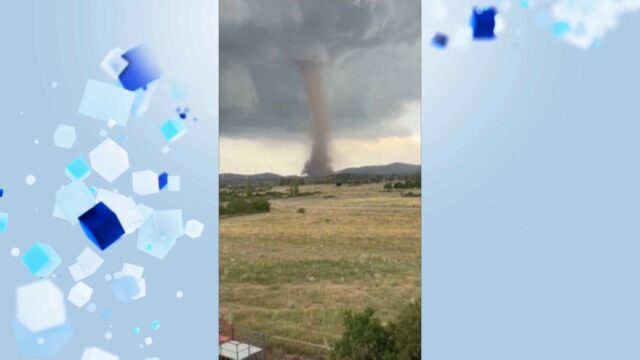Last Friday, the inhabitants of Villa de El Toro, in the province of Castellón, witnessed a meteorological phenomenon as unusual as it was impressive: A large tornado.
He tornado did not directly affect the urban center of the town of Villa de El Toro, which limited its potential impact. However, his passage through the agricultural fields did not go unnoticed, as he raised a considerable amount of earth and debris, offering a spectacle as impressive as it was disturbing for witnesses.
Despite the visual intensity of the phenomenon, No significant damage or injuries were reported.. Nevertheless, the event caused considerable astonishment and concern among residents, many of whom had never witnessed anything similar in the region. This extraordinary event left local residents amazed and has generated an intense debate among meteorological experts.
An unexpected turn in the Valencian climate
The tornado appeared in the midst of a dramatic climate change in the Valencian Community. The region experienced a series of extreme weather events that marked a significant contrast to previous conditions. After a intense heat waveresidents were surprised by a sudden drop in temperatures, with a drop of up to 8 degrees Celsius. This abrupt change not only brought with it a noticeably cooler thermal sensation, but was also accompanied by a series of intense weather events.
Precipitation became torrential, with large amounts of water falling in short periods of time. This raised the risk of local flooding and caused rapid accumulation of water in both urban and rural areas. In addition, the fall of hail of various sizes added another element of danger, threatening to damage crops and vehicles in the area.
Los strong winds completed this picture of extreme weather, with gusts that could have exceeded 80 km/h. These conditions not only presented a risk due to the possible fall of branches and light objects, but also made circulation difficult, especially for tall vehicles.
This stark climate contrast has left residents not only surprised, but also concerned about the region’s increasing weather volatility.
Tornado or supercell? The debate among the experts
The exact classification of the phenomenon has generated an interesting debate among meteorological experts. On the one hand, the State Meteorological Agency (AEMET), the official authority on meteorological matters in Spainofficially classified the event as a tornado. Its evaluation was based on the observed visual characteristics and the available data of the phenomenon.
However, @MeteoStorms, a local meteorology website, offered an alternative interpretation. Based on the latest images of the storm from Alto Palancia, they suggested that the phenomenon could have actually been a supercell. This difference of opinion has highlighted the complexity of classifying extreme weather events and the importance of detailed analysis.
Difference between tornado and supercell
To better understand this discrepancy, it is important to know the key differences between a tornado and a supercell. A tornado It is characterized as a rotating column of air that extends from a storm cloud to the ground. They are generally short-lived but very intense, and are visible as a cloudy funnel or by the debris they raise from the ground.
On the other hand, a supercelda is a type of long-lived storm characterized by a mesocyclone, which is an area of rotation within the storm. Although supercells can produce tornadoes, they do not always do so. They are distinguished by their organized structure and their ability to remain active for long periods.
This event highlights the increasing frequency of extreme weather events in Spain, a trend that climatology experts increasingly associate with global climate change. An increase in the occurrence of unusual events is being observed, such as tornadoes in areas where they have historically been rare, more frequent sudden temperature changes, and heavier rainfall in short periods of time.







